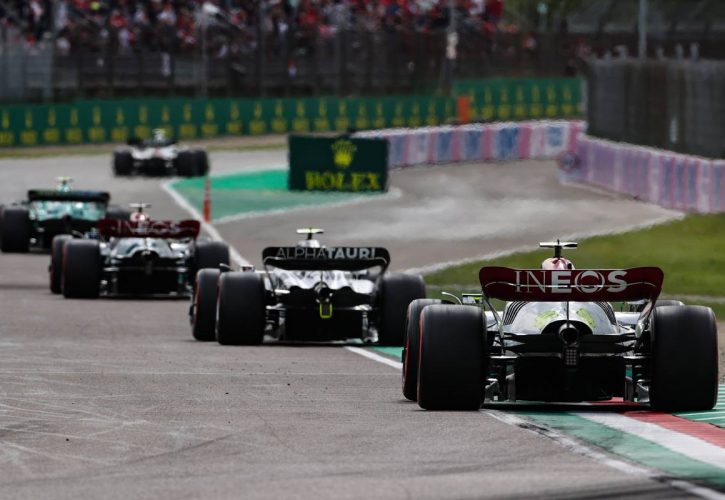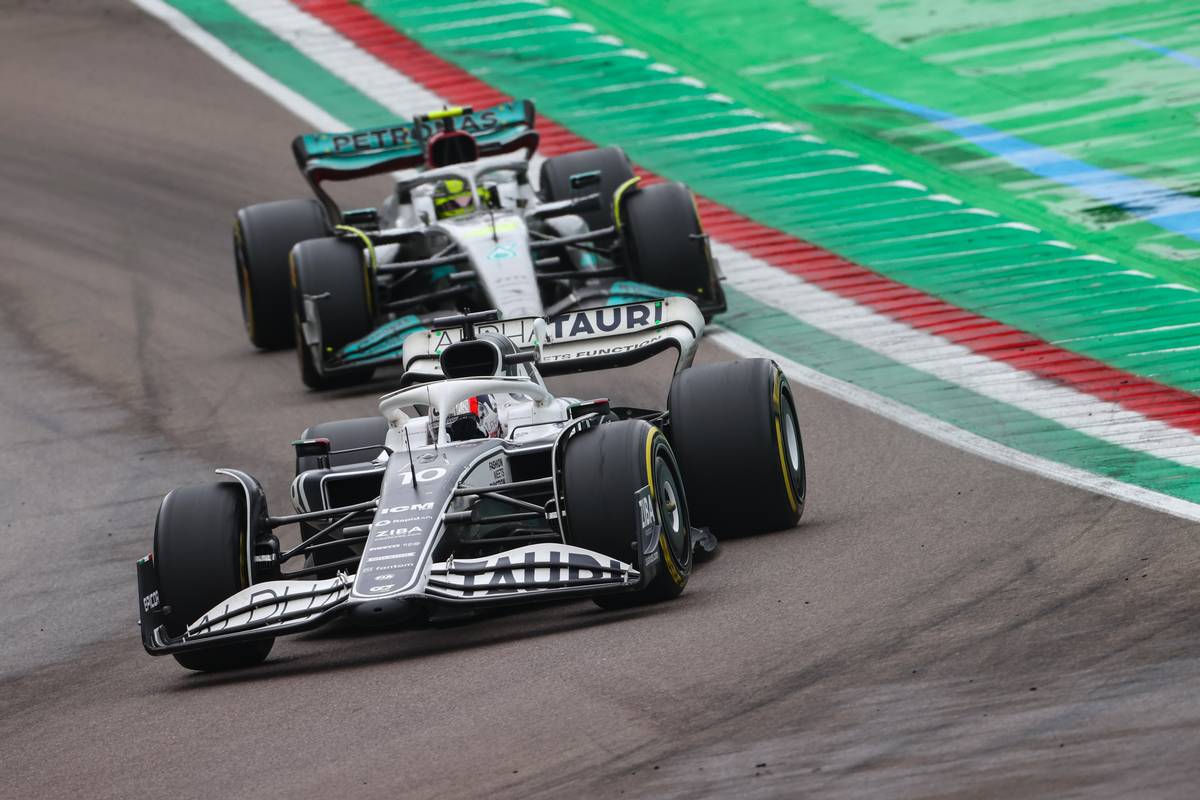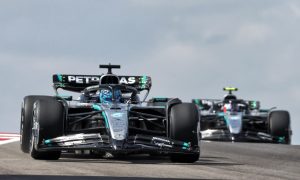
Mercedes have confirmed that Lewis Hamilton's inability to move up the order in the Emilia Romagna Grand Prix was in large part due to the Briton's position in a three-car DRS train.
After launching his race from P14 on the gird at Imola, Hamilton ran as high as tenth during his opening stint.
But the seven-time world champion's swap from the intermediate to the medium tyre pushed him back down to 14th, just behind Williams Alex Albon and AlphaTauri's Pierre Gasly.
Unfortunately, the group raced in formation, stuck in a DRS train, until the checkered flag.
"It's the same problem that we had in the Sprint race, when you are in what we are calling a DRS train," explained Mercedes trackside engineering director Andrew Shovlin in the team's post-race debrief on YouTube.
"Now, the combined effect of the DRS in Imola plus the tow gives you around half a second of advantage to a car that you are following.

"The issue is that, if that car is following another car, and they themselves have DRS, almost all of that advantage is wiped out.
"And that was principally the issue that Lewis had: that, because Gasly had DRS, they were following almost an identical speed profile down the straight.
"Lewis wasn't really able to get alongside, and that was why he spent the whole race rather frustratingly stuck in that position."
While Hamilton spent his afternoon buried in F1's lower midfield, teammate George Russell limited the Mercedes team's damage by finishing fourth.
But Shovlin underscored the impact out the outset at Imola of Mercedes' tyre warm-up issues during a particularly cold race weekend.
"It is fair to say that we struggled with tyre warm-up this weekend," he said.
"It was the coldest track we've been to, the first time we've been running wet conditions in the race, and that certainly cost us in qualifying, leading to those fairly disappointing positions starting the Sprint race.
"On Sunday, the situation wasn't as bad. Now, whether that's a function of it being a formation lap rather than out lap, the drivers also worked very hard on how much temperature they could get into the tyres during that formation lap. They knew that was going to be a challenge.
"But, as you saw with George in particular, he made good progress off the line. It was challenging for the first few corners, but temperatures did come up okay and that contributed to his strong finish."
Keep up to date with all the F1 news via Facebook and Twitter







